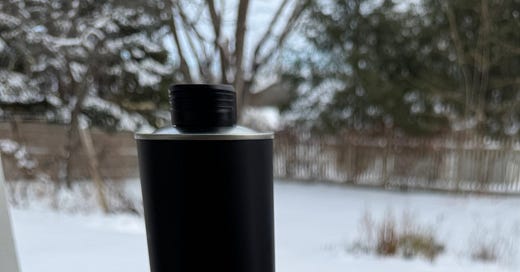It’s not often there’s an overlap between Christmas and Hanukkah, although both festivals are celebrations of light in a time of darkness, part of the magic we humans do to make sure our beloved sun doesn’t just disappear forever. And it works, or at least it has so far. My friend Mitchell Davis reminded me that this is the first such coincidence since 2005 –all the more reason, then, to celebrate. My little family, with its Ukrainian Jewish strain, used the occasion as an excuse to make latkes for Christmas Eve, la Vigilia, and happily chowed down on crisp-crunchy potato fritters with apple sauce and sour cream before setting out the requisite cookies and milk (and a shot of calvados) for Santa Claus.
Because latkes are something that ordinarily are only made once a year, research is always required, to be sure I haven’t left out anything significant. Basically, it’s an easy recipe, just grated potatoes and grated onions, mixed with beaten eggs and a certain amount of binder (matzo meal, breadcrumbs, potato starch, panko), fried in plenty of olive oil.
Extra-virgin?
Gasp! Yes! What do you think the miracle oil was that the victorious Maccabees found in the temple? Hint: It wasn’t canola!
Scrolling through various online recipes, however, I wasn’t satisfied with what I found. And then I remembered a truc (trick) from Susan Friedland, my erstwhile editor at HarperCollins and a noted expert on Jewish food traditions. Her recipe was published in The Jewish American Kitchen, a book she wrote some years ago with Raymond Sokolov. And the secret technique that makes all the difference is this: Using a kitchen towel, you wring and wring and wring the grated potatoes and onions over a bowl to collect all their considerable liquid, and then you wring again, just to be sure. After that, let the liquid settle briefly so the starch sinks to the bottom of the bowl and makes a dense white layer under the murky potato juice; tip off the murky juice on top and scrape the clear white starch back into the wrung-out potatoes. The result? A very special and desirable crispiness.
I don’t claim, nor does Susan, that this particular procedure is unique to her, but she is the person who taught me to do this and therefore, in my book, she will aways be the origin, although she may well credit a mother, a grandmother, an ancient aunt, one of those kitchen geniuses we should all be so lucky to cherish.
Keep reading with a 7-day free trial
Subscribe to On the Kitchen Porch to keep reading this post and get 7 days of free access to the full post archives.




